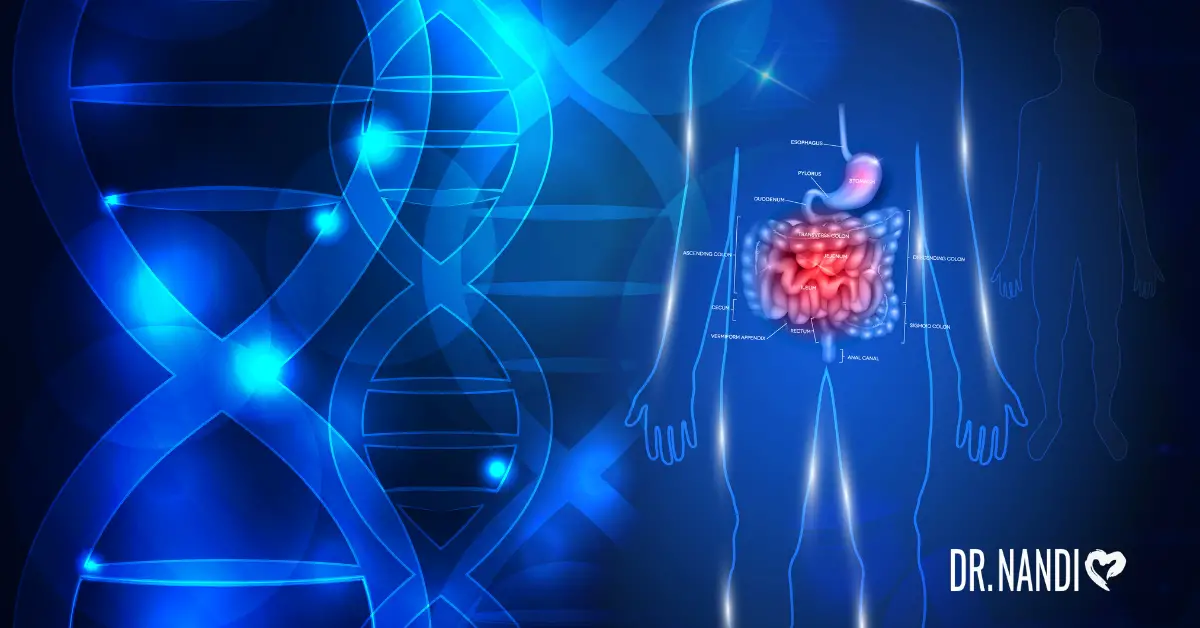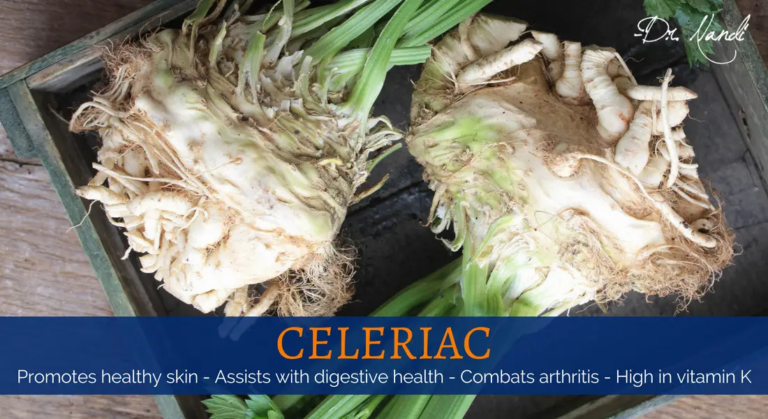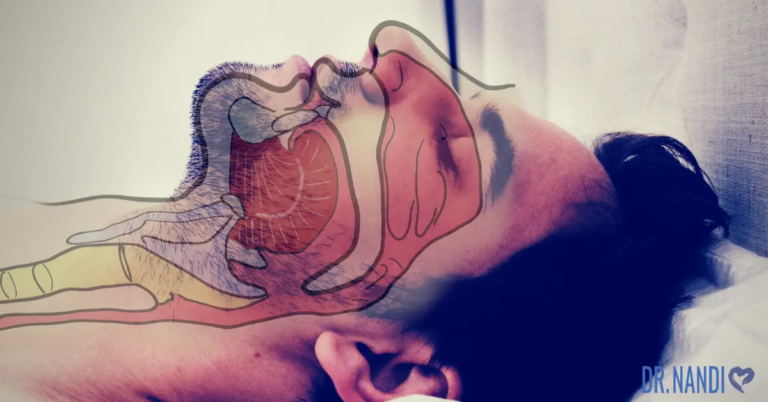Celiac disease is a serious autoimmune condition triggered by gluten. It affects about 1% of the population. Celiac can cause unpleasant symptoms and lead to serious health complications. Understanding the disease, proper diagnosis, and treatment through a strict gluten-free diet is essential to maintaining optimum health.
In this post, I want to discuss celiac disease in depth so you can have a greater understanding of the disease, how it affects the body, what you can do to treat it, and how to best work with your doctor to find healing and support.
Celiac disease is a serious autoimmune disease that is triggered by eating foods and using products that contain gluten. Having an autoimmune disorder means that the body’s immune system ends up attaching itself, in this case, the lining of the small intestine which can lead to nutrient malabsorption, unpleasant symptoms, and serious health complications. Avoiding gluten at all times is the most effective way to successfully manage celiac.
Celiac disease is estimated to affect 1 percent of the population worldwide. About two and a half million Americans with Celiac go undiagnosed putting them at serious risk of long-term health complications. Celiac disease is on the rise. Fifty years ago only about 0.2 percent of the population was diagnosed with Celiac. This means five times the population has been diagnosed today. Celiac is hereditary and someone with a first-degree relative with Celiac has a 10 percent risk of developing the disease themselves.
Celiac is often referred to as the silent killer because it can lead to lasting damage and symptoms are not always obvious. The symptoms of Celiac can be similar to IBDs, IBS, gluten intolerance, wheat allergy, lactose intolerance, and more. Proper diagnosis is absolutely crucial to successful treatment. (1, 2, 3, 4, 5, 6, 7, 8, 9)
Are Celiac Disease and Gluten Intolerance the Same?
No, Celiac disease and gluten intolerance are not the same. Celiac disease is a serious autoimmune condition where the ingestion of any gluten leads to damage to the small intestine and serious health complications. People with Celiac disease must stay away from gluten completely, including non-food products that contain gluten, and avoid cross-contamination from products that “may contain gluten” or have come to contact with gluten products.
There are also people who are dealing with gluten intolerance or non-celiac gluten sensitivity. Gluten intolerance is not an autoimmune condition. It happens because of a lack of enzymes in the body for digesting gluten. The ingestion of gluten causes the body to have a stress response that does not involve the immune system. The level of sensitivity differs from person to person. While those with gluten intolerance are also advised to keep far from gluten, some may get away with a little gluten from time to time.
Gluten intolerance and celiac disease are also not to be confused with having a wheat allergy. A wheat allergy occurs when the immune system finds a food protein it considers dangerous to the body. Since wheat has many proteins besides gluten, this reaction may not be caused by gluten. A wheat allergy happens because of a sensitive immune system and possibly environmental stresses.
Since symptoms can be similar, it is important to get tested to find out if you have celiac, gluten intolerance, or wheat allergy. (9)
What Are the Symptoms?
Symptoms of celiac disease vary in adults and children. Adults tend to experience fewer digestive symptoms than children do. (10)
Symptoms of Celiac Disease in Adults:
- unexplained iron-deficiency anemia
- fatigue
- bone or joint pain
- arthritis
- osteoporosis or osteopenia
- depression or anxiety
- brain fog
- tingling and numbness
- seizures or migraines
- missed menstrual periods
- infertility or recurrent miscarriage
- canker sores inside the mouth
- itchy skin, itchy rashed
Celiac Disease Symptoms in Children
- abdominal bloating and pain
- chronic diarrhea
- vomiting
- constipation
- pale, foul-smelling, or fatty stool
- unexplained weight loss
- fatigue
- irritability and behavioral problems
- dental enamel issues
- delayed growth and puberty
- short stature
- failure to thrive
- Attention Deficit Hyperactivity Disorder (ADHD)
Risk Factors
Celiac disease can affect anyone, however, it is more common among those dealing with one or several of these conditions (12)
- A family member with celiac disease or dermatitis herpetiformis
- Type 1 diabetes
- Autoimmune thyroid disease
- Microscopic colitis (lymphocytic or collagenous colitis)
- Addison’s disease
- Rheumatoid arthritis
- Down syndrome or Turner syndrome
Complications
Complications of Celiac include (12):
- malnutrition
- loss of calcium and bone density
- infertility and miscarriage
- cancer
- neurological problems
- lactose intolerance
Can Celiac Be Cured?
Celiac disease is an autoimmune condition that currently has no cure. Following a completely gluten-free diet is absolutely essential to avoid the progression and occurrence of symptoms and complications. Building up the immune system through a healthy diet and correcting possible nutritional imbalances is highly important once gluten is removed. (13, 14)
Why Does Celiac Disease Occur?
Celiac disease occurs because of the interaction between certain genes, gluten, and the environment. Consuming gluten triggers an immune response in the small intestine leading to small intestine damage, malabsorption, an array of symptoms, and long-term health complications. The body is actually attacking itself. The exact process is still unknown. Celiac is a genetic disorder however, having a certain gene variant doesn’t mean you have or will ever have Celiac. There are other factors involved besides your genes. The first appearance of the disease may be triggered by major life events, such as surgery, pregnancy, childbirth, viral infection, or severe emotional stress. (12)
How Celiac Disease Is Diagnosed
There are several blood tests available that screen for Celiac disease antibodies, but the tTG-IgA test is the most common. Those with Celiac carry one or both of the HLA DQ2 and DQ8 genes. However, since about 40% of the population does too, this alone does not indicate that you have or will ever have Celiac. If you have a family member with Celiac or are on a gluten-free diet already, genetic testing can provide further guidance. Undergoing endoscopic biopsy can find out if you have any damage corresponding to Celiac. If Celiac is ruled out, an elimination diet or food intolerance testing can check for wheat allergy and gluten sensitivity. Treatment for Celiac includes a strict gluten-free diet and lifestyle as well as a regular follow-up to check for complications and nutritional deficits. (11)
Treating Celiac Disease – 7 Steps To Going Gluten-Free
To treat Celiac disease, going gluten-free is non-negotiable. This means absolutely NO gluten, including products that ‘may contain gluten’ and foods that may be cross-contaminated. Since untreated Celiac can lead to malabsorption, it is important to correct nutritional deficiencies through a healthy balanced diet and supplements if needed. Don’t just rely on gluten-free packaged foods, but focus on real, whole foods instead: greens, veggies, fruits, nuts, seeds, beans, legumes, and gluten-free pseudo-grains.
Going gluten-free can be scary and overwhelming at first, but you have nothing to worry about. Follow these 7 simple steps and go gluten-free today.
#1 Clean Out The Fridge & Pantry
Get a big cardboard box and a few trash bags. Go through everything you have. Throw away anything that’s expired or rotten. Separate gluten-containing and gluten-free food. Set aside any gluten-containing usable food in a box. If your entire household is getting on the gluten-free bandwagon: donate this box. If not, make sure to designate separate are for gluten-containing and gluten-free products to avoid cross-contamination. It is best to keep gluten-free food in separate seal-able bins and containers. Clean your pantry and fridge well and shelf your food.
#2 Buy A New Toaster
Toasters are pretty impossible to clean. If you’ve toasted gluten-containing bread in it, there is no way to avoid cross-contamination. Buy a new toaster designated for gluten-free food only. Keep it away from gluten-containing foods, possibly in a closed container. While you are at it, buy new cutting boards and other kitchen items that are difficult to clean well and have been previously used for gluten-containing foods.
#3 Eliminate Double Dipping
Condiments that come from squeeze bottles are your friends. If using a glass or plastic jar of peanut butter, jam, or hummus, don’t double-dip so you don’t leave crumbs in the jar. It is particularly important for gluten-eater family members and friends to follow this rule in order to protect your health. Don’t share utensils with gluten-eaters either. If it feels too difficult, get your own jar for gluten-free foods only.
#4 Become A Label-Reading Master
If you have Celiac even a tiny bit of gluten can hurt you. Get serious about reading labels to catch any names that may contain gluten, such as malt vinegar, malt flavoring, stabilizers, thickeners, starches, and flavorings. Apps such as foducate and scanglutenfree can help you out a great deal. (15)
#5 Refill Your Pantries – Shopping List
Fill your pantry with gluten-free foods:
- quinoa
- amaranth
- rice
- gluten-free pasta
- beans
- nuts and seeds
- dehydrated veggies and fruits
- chickpea, buckwheat, GF mix, coconut flour
- nutritional yeast
- corn tortillas
- canned beans and veggies
- dried fruits anddates
- gluten-free cereal
- honey and maple syrup
- spices, herbs, and teas
# 6 Research Restaurants That Serve Gluten-Free Food
Eating out with Celiac doesn’t have to be difficult. These websites and apps can help you to find gluten-free restaurants:
- allergyeats.com
- glutenfreetravelsite.com
- findmeglutenfree.com
- glutenfreepassport.com
- CeliHack app
- Find Me Gluten Free app
- Is That Gluten-Free app
Bonus: print out your gluten-free card at celaictravel.com to help restaurants to accommodate your needs around the world. Remember, not all restaurants are educated, you can help them.
#7 Fill Your Diet With Gut-Healing Foods
Undetected and untreated Celiac can lead to tummy issues, gut imbalance, malabsorption, and nutritional imbalance. It is important to re-create balance in your gut.
Unfortunately, many gluten-free products on the market are overly processed and not gut-friendly. It is important to focus on healthy, whole foods instead. Green, veggies, fruits, nuts, seeds, beans, and legumes are your friends. Cook at home if you can. Eat plenty of fiber through a plant-based diet. Take daily-probiotic supplements and eat probiotic-rich foods, such as sauerkraut, kimchi, kombucha, kefir, and yogurt to help your gut heal.
Bonus: Things You Wouldn’t Expect That Contain Gluten
There are some things that you expect to have gluten in them, such as wheat pasta, wheat and rye bread, and conventional cookies. There are other things that may not be obvious, or perhaps you haven’t even heard about. (16, 17)
Gluten-containing foods:
- Atta (chapatti flour)
- Barley (flakes, flour, pearl)
- Beer
- Breading, bread stuffing
- Brewer’s yeast
- Bulgur
- Communal wafer
- Durum (type of wheat)
- Einkorn
- Emmer
- Farina
- Farro/faro or spelt or dinkel
- Fu
- Graham flour
- Hydrolyzed wheat protein
- Kamut
- Malt, malt extract, malt syrup, malt flavoring
- Malt vinegar
- Malted milk
- Matzo, matzo meal
- Modified wheat starch
- Oatmeal, oat bran, oat flour, whole oats (except pure, uncontaminated oats)
- Rye bread and flour
- Seitan (a meat-like food derived from wheat gluten used in many vegetarian dishes)
- Semolina
- Soy sauce
- Spelt (a type of wheat also known as farro, faro, or Dinkel)
- Triticale
- Wheat bran
- Wheat flour
- Wheat germ
- Wheat starch
Generally be careful with stabilizers, thickeners, starches, and flavorings. Also be careful with egg substitutes, veggie burgers, communal wafers, roasted nuts, flavored teas and coffee, chocolates, cereals, dressings, deli meats, bacon bits, and all processed foods in general. Read labels, ask for ingredients, and inform your host ahead of time when invited over.
Other non-food items that may contain gluten:
- lipstick, lipgloss, lip balm
- herbal and nutritional supplements
- over the counter and prescription medications
- vaccines
- play-dough
Dr. Nandi’s Gluten-Free Recipes
- Gluten-Free Gingerbread
- Gluten-Free Turkey Chili
- Gluten-Free Spinach Cakes
- Hearty Two-Lentil Soup With Mushrooms
- Apple Cider Roasted Veggies
- Golden Milk Latte
- Spicy Honey Garlic Cauliflower Bites
- Tomato Basil Quinoa Bake
- Peach Cobbler
- Leak and Mushroom Cabbage Rolls
Frequently Asked Questions About Celiac Disease
Q. Will Celiac disease kill me?
A. It likely won’t. Celiac disease is rarely deadly. Untreated and unrecognized Celiac or Celiac that does not respond to the removal of gluten leads to a higher chance of lymphoma, a form of cancer hence increasing the risk of death as well.
Q. Where does Celiac disease cause pain?
A. Celiac can cause abdominal discomforts, such as bloating, gas, and diarrhea. It can lead to headaches, migraines, joint pains, skin itches, and tingling as well.
Q. Why is Celiac disease on the rise?
A. Though it is clear that Celiac is on the rise, it is not clear why. One reason may be that doctors are testing more for it. Another reason is the increasing amount of gluten in our processed foods, products, and medication.
Q. When was Celiac disease discovered?
A. Though the term “coeliac” was introduced back in Ancient Greek, it first gained the attention of Western medicine in the 19th century by Francis Adams and received even more attention in the early to mid 20th century. The hereditary character of Celiac was not recognized until 1965. (3, 4, 5)
Q. Are Celiac disease and lactose intolerance related?
A. Though many people with Celiac also have trouble digesting lactose, they are not related.
Q. Is Celiac disease genetic?
A. Yes.
Q. Are Celiac disease and diabetes related?
A. Yes, there is a genetic link between Celiac and diabetes. If you have one, you are at risk of under another. About 6 percent of those with type 2 diabetes have Celiac as well. Celiac disease can also lead to blood sugar issues. (6)
Q. Are Celiac disease and psoriasis related?
A. The relationship between Celiac disease and psoriasis is controversial. Celiac can lead to skin rashes and itching resembling psoriasis. Some people suffer from both Celiac and psoriasis. A gluten-free diet is absolutely essential for Celiacs, but can also help those with psoriasis. There is no proven connection between the two conditions. (7)
Q. Are Celiac disease and ulcerative colitis related?
A. Celiac can lead to digestive issues. An increasing number of people with Celiac are also dealing with IBDs, including ulcerative colitis and Chron’s disease. (8)
Conclusion
As you can see, Celiac disease is a serious autoimmune condition that causes uncomfortable symptoms and serious health complications. A gluten-free diet is absolutely essential for treatment and regaining your health.
If you think you might have Celiac, I suggest scheduling an appointment with your healthcare professional.
Did you find the information in the post useful? What other conditions would you be interested in learning about on our blog? Comment below.
References:
- What is Celiac Disease? | Celiac Disease Foundation
- Celiac Disease Becoming More Common – The New York Times (nytimes.com)
- STUDIES OF THE FAMILIAL NATURE OF CELIAC SPRUE USING BIOPSY OF THE SMALL INTESTINE – PubMed (nih.gov)
- The Extant works of Aretaeus, the Cappadocian – Aretaeus (of Cappadocia.) – Google Books
- A History of Coeliac Disease – Abstract – Digestive Diseases 2008, Vol. 26, No. 2 – Karger Publishers
- Diabetes and Celiac Disease – Gluten Intolerance Group
- Psoriasis: Diet Modifications: National Psoriasis Foundation
- Poorly Responsive Celiac Disease | Celiac Disease Foundation
- Non-Celiac Gluten Sensitivity | BeyondCeliac.org
- Symptoms of Celiac Disease | Celiac Disease Foundation
- Testing & Diagnosis | Celiac Disease Foundation
- Celiac disease – Symptoms and causes – Mayo Clinic
- Advances in celiac disease and gluten-free diet – PubMed (nih.gov)
- Top 10 Gluten-Free Apps – Gluten-Free Living (glutenfreeliving.com)
- Sources of Gluten | Celiac Disease Foundation
- Gluten: Tips for Finding It on a Food Label (webmd.com)




















